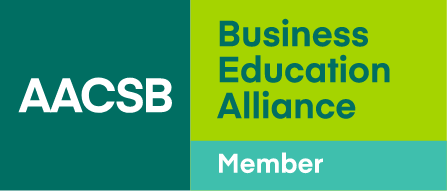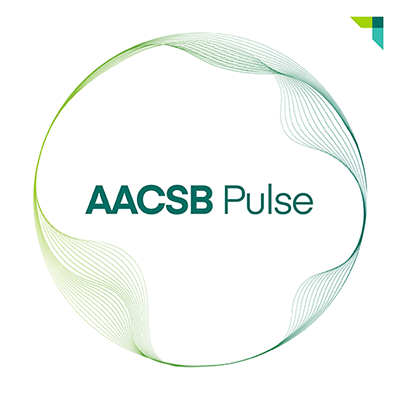The Autonomy Advantage in Business Education
- The future of business education belongs to institutions that empower students with more autonomy in how they shape their learning journeys.
- Offering students structured choices leads to deeper learning, stronger skill development, and greater equity in opportunity.
- When business schools empower faculty to promote student autonomy, they help transform rigid educational systems into dynamic learning ecosystems.
As an educator working at the intersection of business analytics and workforce development, I’ve witnessed a growing disconnect between how students learn and how institutions teach. Most business schools still teach as if it were 1995, abandoning students to a rigid system that does not emphasize their individual learning needs.
When today’s academic leaders look at the direction of education, they might surmise that the real driver of revolution in education is technology. But while the need for skills in digital transformation and artificial intelligence (AI) have dominated headlines, the skill that is the true emerging disruptor may be something more human: autonomy.
Why does autonomy matter now? AACSB’s 2025 State of Business Education Report reveals that more than 75 percent of business school leaders are concerned about financial sustainability. At the same time, undergraduate enrollment is declining, signaling deeper shifts in student expectations and institutional relevance. Today’s learners increasingly expect the same flexibility and self-direction in their educational experiences as they experience in modern workplaces.
This means that for business schools to remain relevant in the market, they need to emphasize and support student autonomy in ways that reflect the realities of modern work environments and make continuous learning both scalable and sustainable. Embedding autonomy into course design is the foundation for developing resilient, lifelong learners who are equipped to lead in dynamic environments.
Pandemic Lessons: The Autonomy Experiment
The pandemic forced a global experiment on millions of students and workers—and the results were revealing. According to a Pew Research Center report, by 2022, 61 percent of remote-capable individuals in the U.S. were teleworking by choice, not necessity. Most reported improved work-life balance (64 percent) and better productivity (44 percent), reflecting a clear shift toward valuing individual empowerment in when and how work gets done.
Similarly, Gallup’s State of the Global Workplace report highlights that employees who feel they are empowered in their jobs are more engaged and productive.
My doctoral research found a significant relationship between autonomy and job satisfaction during the COVID-19 pandemic. Telecommuting itself did not directly influence satisfaction; it was autonomy that was a stronger predictor of employee well-being. This suggests that workers’ sense of autonomy, not remote status alone, plays a critical role in how employees experience work. These insights now shape how I design learning experiences—with flexibility built in from day one.
During the pandemic, students experienced a sense of autonomy in how their programs were paced, how their work was assessed, and how they participated in shaping their educational journeys.
For students, remote and hybrid learning offered a similar shift—for the first time, many experienced a sense of autonomy in how their programs were paced, how their work was assessed, and how they participated in shaping their educational journeys. And like employees, many students now expect the same level of flexibility and ownership in their learning even after returning to traditional classrooms.
If we keep preparing students for the workplace of yesterday, we’ll keep failing the workforce of tomorrow. To remain relevant, business schools must do more than update content; they must build cultures of continuous learning. They must reimagine their programs and create interconnected systems that support student choice, faculty innovation, employer partnerships, and real-time skill development.
The Case for Autonomy
The case for autonomy-centered environments is backed by robust research: Richard Ryan and Edward Deci’s metanalysis found that such environments consistently predict higher engagement and performance in both academic and workplace settings.
Recent studies confirm the stakes: A University of Cincinnati study finds that 71 percent of students report reduced stress and better time management when given flexible deadlines, and a Carnegie Mellon University study indicates that students who are given greater choice in attendance and assessment requirements showed better attendance and higher academic performance than peers who learned in more rigid formats. In addition, studies show students who are allowed to opt out of challenging assessments invested more effort and achieved greater mastery.
That said, critics rightly note that autonomy must be structured. Self-determination theory confirms that programs that highlight individual choice work best with appropriate guidance, especially for students who struggle with self-management. The goal is to give students meaningful choices within clear parameters, not unlimited freedom.
Yet significant challenges remain. Institutional inertia, fear of losing curricular control, and outdated faculty reward systems often stifle innovation. Many institutional policies still fail to support flexible learning strategies such as blended instruction, flipped classrooms, and competency-based education. That failure restricts both student and faculty autonomy.
As Thayalan Muniandy and Norazilawati Abdullah note in a 2023 review, and as the Organisation for Economic Co-operation and Development (OECD) emphasizes in its 2025 Trends Shaping Education report, rigid frameworks stifle the sense of autonomy that is required for lifelong learning.
From Classroom to Institution
Self-direction without structure isn’t innovation—it’s chaos. True, meaningful autonomy is achieved only when students are offered structure and support with their choice.
That’s why, at Jackson State University in Mississippi, I redesigned my business analytics and statistics courses to offer students a choice among three final assessments: a capstone project, an industry-guided project delivered by Coursera Career Academy, or a traditional exam. In my business analytics course, 69 percent of students chose industry projects; in statistics, most students selected the exam, although some completed multiple options for bonus points.
Students who completed the Career Academy guided projects gave the most positive feedback, citing relevance and career alignment. Even students who were coping with anxiety or hampered by inconsistent study habits—a lasting impact of the pandemic—responded positively when personal choice was paired with structure. Coursera’s industry projects also benefit faculty, reducing their workload by integrating pre-designed, employer-vetted content.
I know that my school is not alone in working to give students more control over their learning experiences. Other prominent institutions are putting the latest research findings to work, piloting autonomy-centered models:
- The hybrid MBA program at INSEAD in Fontainebleau, France, enables globally distributed teams to collaborate asynchronously, building both autonomy and intercultural fluency.
- The Design Factory—a student-led “learning factory”—has empowered learners at Aalto University in Espoo, Finland, to co-create curricula with faculty since 2008. As part of the curriculum, students are paired with experienced faculty and industry mentors who provide guidance, validate project outcomes, and ensure academic rigor. This mentorship structure reassures stakeholders that student-run initiatives meet quality standards while fostering experimentation and creativity. The initiative has driven a 40 percent increase in student entrepreneurship.
- Singapore Management University has adopted flipped classroom models enhanced by AI-powered feedback tools, providing students with real-time performance insights.
- The University of Sussex in the United Kingdom encourages flexible assessment methods that allow students to choose the method or format of their evaluations. Assignment menus, used across various educational settings, offer students a selection of assignments or tasks to choose from, catering to different learning styles and preferences.
These models prove that it’s possible for business schools to scale autonomy while maintaining both rigor and results.
How to Build Autonomy Into Education
Here are three actionable strategies that institutions can adopt to embed autonomy into business education:
Choice-based assessment. Let students choose how they demonstrate learning mastery, as I did in my business analytics and statistics courses with the flexible assessment menu I describe above. This approach allows students to align assessment methods with their strengths, schedules, and career interests, which drives both engagement and outcomes.
Skill-aligned personalization. Autonomy works best when connected to concrete professional outcomes. Effective approaches include:
- Digital skill portfolios that students build throughout their programs.
- Guided reflection prompts that connect their choices to the development of career readiness skills.
- Self-selected capstones that are aligned with career goals.
These tools encourage self-direction and metacognition—skills that are increasingly crucial in both AI-enhanced and team-based environments. Education Design Lab’s 2024 report shows that skills-based, stackable learning paths boost autonomy and connect education to workforce needs.
There are several examples of institutions that are already putting these methods into practice. The Jenkins MBA program at North Carolina State University in Raleigh allows students to customize their academic journeys through concentrations and electives tailored to specific career goals. Similarly, Harvard Business Publishing delivers a personalized, learner-driven digital platform that enables professionals to engage with content aligned to their development needs and leadership aspirations.
Faculty development for flexible teaching. The 2023 EDUCAUSE Horizon Report notes that many faculty feel like “victims of the future”; they feel overwhelmed by constant technological change. But institutions can make faculty more confident adopting new technology and teaching in flexible formats in multiple ways:
- By offering stipends for redesigning courses to integrate autonomy-centered approaches.
- By creating communities of practice for sharing implementation strategies.
- By updating promotion criteria that value educational innovation.
Benchmark programs such as the Teaching and Learning Studio at Stanford University in California and the Bok Center at Harvard University in Cambridge, Massachusetts, offer scalable models for faculty development; these models equip instructors to design adaptive, autonomy-centered learning without requiring a full overhaul of existing courses. The Center for Excellence in Teaching, Learning and Online Education at Georgia State University in Atlanta creates space for faculty collaboration, innovation, and professional development in a supportive environment.
These initiatives are based on same principle: Student autonomy thrives when faculty have the freedom to innovate.
Flexibility Supports Lifelong Learning
COVID-19 was a massive experiment that proved that students and workers alike could thrive with the right balance of freedom and structure. And just as my research showed that autonomy, when paired with structure and guidance, buffers the effects of isolation in remote work, the same principles apply in classrooms, whether courses are delivered via hybrid or self-directed models.
Autonomy also aligns directly with AACSB’s 2020 Business Accreditation Standards, particularly Standard 4 (Curriculum) and Standard 9 (Engagement and Societal Impact). By embedding flexibility into program design, institutions promote innovation, relevance, and lifelong learning.
Giving students greater autonomy supports broader shifts toward the integration of AI, the delivery of stackable credentials, and the emphasis on experiential learning.
Even so, many institutional leaders will ask, “How do we measure autonomy’s impact?” In answer, the OECD’s Curriculum Flexibility and Autonomy report offers valuable direction. It emphasizes that autonomy—when paired with clear objectives, accountability frameworks, and societal support—is key to addressing diverse learner needs, improving instructional quality, and advancing inclusive education.
Giving students greater autonomy in their learning also supports broader shifts toward the integration of AI, the delivery of stackable credentials, and the emphasis on experiential learning.
From Concept to Action
Once business school leaders acknowledge how important autonomy is to student learning, how can they integrate it into their programs and ensure that learners thrive? They can start by prioritizing four actions in their curricula:
- Audit the curriculum for choice opportunities. Identify assignments or assessments that offer students meaningful choices without compromising outcomes.
- Pilot autonomy in a core course. Test flexible assessment options in a high-enrollment course and compare the levels of student engagement and performance with the levels achieved in traditional formats.
- Engage employers to define autonomy-related skills. Partner with industry to align student projects and outcomes with real-world expectations for self-directed work.
- Offer faculty workshops on structured flexibility. Equip faculty with tools and support to design choice-based learning, and reward innovation in teaching practices.
So, before you close this page, ask yourself:
- Where in your curriculum can your students be given meaningful choices without compromising learning outcomes?
- What support do you or your faculty need to confidently design autonomy-centered experiences?
- How might your institution define and communicate the value of autonomy as a competitive advantage?
As a call to action, I challenge every business educator to trade one rigid syllabus for a teaching plan based on providing students with structured choices. Then, watch as students’ resilience replaces their compliance.






